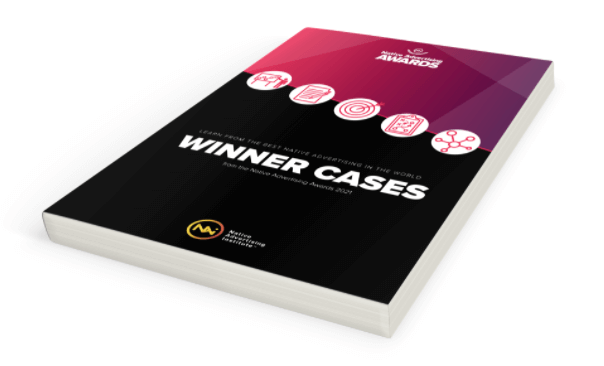
 Details
Details
Native advertising has become a popular and powerful tool for brands and publishers alike. For brands, it presents an effective way to engage with potential customers, increase brand awareness, drive website traffic and ultimately increase sales.
For publishers, native advertising can generate additional revenue while providing content that their existing audiences are likely to find useful and/or entertaining. By allowing native advertising on their sites, publishers can reduce their reliance on subscription models or traditional advertising that can be offputting to audiences.
Because native advertising, when done correctly, blends seamlessly with publishers’ existing content, it’s a non-intrusive way to monetize their site while also providing value to their readers. Good native advertising offers something of value to the audience in a way that feels natural and is less likely to fall victim to ‘banner blindness’.
But neither brands nor publishers are likely to find success if they one day decide to blindly leap into native advertising. Like all things in the marketing world – and the real world, for that matter – a well-thought-out strategy is much more likely to work than just throwing things against the wall to see what sticks.
With that in mind, we will explore the steps involved in creating a successful native advertising strategy.
1. Understand native advertising
This may seem obvious but before creating a native advertising strategy, it is essential to understand what it is and how it differs from other types of advertising. Native advertising is paid advertising where the ad matches the form, feel and function of the content of the media on which it appears. It is usually displayed in the same format as the surrounding content, making it less disruptive and more engaging for the user. Native advertising can take the form of sponsored articles, videos, podcasts, social media posts and more.
In most cases, native advertising will be just one element in a brand’s overall marketing strategy. Likewise, native is unlikely to replace all forms of traditional advertising for publishers. Native advertising is an important and effective form of digital marketing but it typically does not exist in a vacuum.
2. Set your goals
What do you want to achieve with your native advertising campaign? Brands, do you want to increase brand awareness, generate more leads, or drive more traffic to your website? All of the above?
Publishers, are you looking at this primarily as an additional revenue stream or do you want to use native content to drive more traffic to your website? Do you see this as a way to provide paid content that complements what you are already doing on the editorial side?
Whichever side of the equation you are on, clearly defining your goals will help you create a more targeted and effective strategy. The goals will also allow you to determine the metrics you’ll use to measure success.
→ READ MORE: 5 common mistakes when setting native ad campaign goals
3. Identify your audience
The success of a brand’s native advertising strategy will depend heavily on how well it knows its target audience. Determine the who, what, where, when and how of the audience. Their interests, habits, preferences, demographic characteristics and geographic location will all affect an advertiser’s ability to create content that will resonate with audiences and increase the chances of engagement and conversion.
Publishers also need to understand their audience when creating a native advertising strategy. What types of content do your readers/viewers typically engage with? What are their interests and pain points? By understanding your audience, you can work with advertisers to create content that appeals to them and that they are more likely to engage with.
4. Choose the right platform
There are numerous platforms available for native advertising, including websites, social media, podcasts, recommendation widgets and more. Each platform has its own unique features and audience, making it important to choose the right one. It is essential that brands research each platform to determine which is best suited for their goals and target audience.
Publishers will also need to consider the platform used for delivering native advertising to their audience. Publishers are most likely interested in a platform that will generate traffic, complement the look and feel of their editorial content and offer a favourable pricing model.
To get a sense of your options, we recommend that you read our articles on the different types of native advertising and the top native ad networks for scaling your business.
5. Create engaging content
Well duh, right? The best-laid plans simply will not work – or work as well as they could – without good content. Native advertising content should be informative, entertaining and relevant to the audience. It should be designed to seamlessly blend in with the surrounding content and not appear like a blatant advertisement.
There are different approaches to creating quality native advertising content. Some brands may go it alone and come up with the content themselves. Others may turn to their trusted agency partners, while in other cases the content will be produced by the publisher. These days, many leading publishers have their own in-house native content teams that specialise in producing articles, videos and more that will provide value to their audience while aligning with the advertiser's goals and objectives. A good ‘sniff test’ for publishers is to ask themselves whether they would run something on the same subject matter if they were not being paid. If you would conceivably cover the topic editorially, that’s a tell-tale sign that it’s likely to fit well on your site and provide something that your audiences want.
In some ways, who does the content is less important than how it is done. Unlike a banner ad that can be tossed together in a few minutes, quality native advertising takes time. Don’t rush it.
READ MORE: Creating Branded Video Content That Works
6. Let’s talk money
Brands should head into a native advertising campaign with a budget in mind. Native advertising campaigns can range from a few hundred dollars to thousands of dollars, depending on the goals and the platform. It is essential to establish a budget that aligns with your goals and allows you to achieve the desired results.
Publishers should consider a number of factors when setting a price for a native advertising campaign on their channels. Where will the native content be placed on the site? Who is creating it – your in-house native team or the advertiser? Are there other advertisers clamouring to be on your site? It almost goes without saying that the level of competition for your prime real estate will impact pricing.
The right budget is going to depend on finding the right balance between value for advertisers and profitability for publishers.
7. Monitor and measure results
With all the work you’ve put into your native advertising strategy and the content itself, it is crucial to know whether it worked. Tracking metrics such as click-through rates, engagement rates and conversions will help both brands and publishers determine the effectiveness of a native advertising campaign. This information can also help either side make adjustments in order to achieve better results. It’s important to know how the native ads are performing early and often – not just after the campaign has ended. Data is your ever-present friend so use it to gain insights that can help you make adjustments that will better resonate with your audience. Experiment with different headlines, images and CTAs, then collect data about how they perform to learn what works the best.
8. Be transparent
The same reason that native advertising is so effective is what also sometimes sets it up for criticism. Because good native advertising will closely resemble its surroundings, it is incredibly important to clearly label all native content. Transparency is key. Whether it’s called “sponsored content”, “paid content”, “partner content” or something else altogether, it must be clear to audiences that they are reading or watching paid advertising.
Don’t worry, it won’t scare them off. Quite the contrary, actually. Research shows that the more transparent and explicit a sponsored label is on native content, the more receptive the reader is to it. This is particularly true if the content is contextual and relevant to the audience’s experience.
→ READ MORE: NAI founder: No one benefits from misleading readers
Takeaway
Native advertising is an effective way for businesses to engage with potential customers and achieve their marketing goals. It is also a great way for publishers to monetise their platforms while providing audiences with content that will inform and/or delight them.
Creating an effective native advertising strategy requires an understanding of what native can do, setting clear goals, leveraging audience insights, monitoring and tweaking the campaign as it goes, and most importantly, creating engaging content.
By following these steps, brands and publishers can create a win-win native advertising strategy. Make that a win-win-win, because native advertising done right will also give audiences something they want to read, watch and share.





